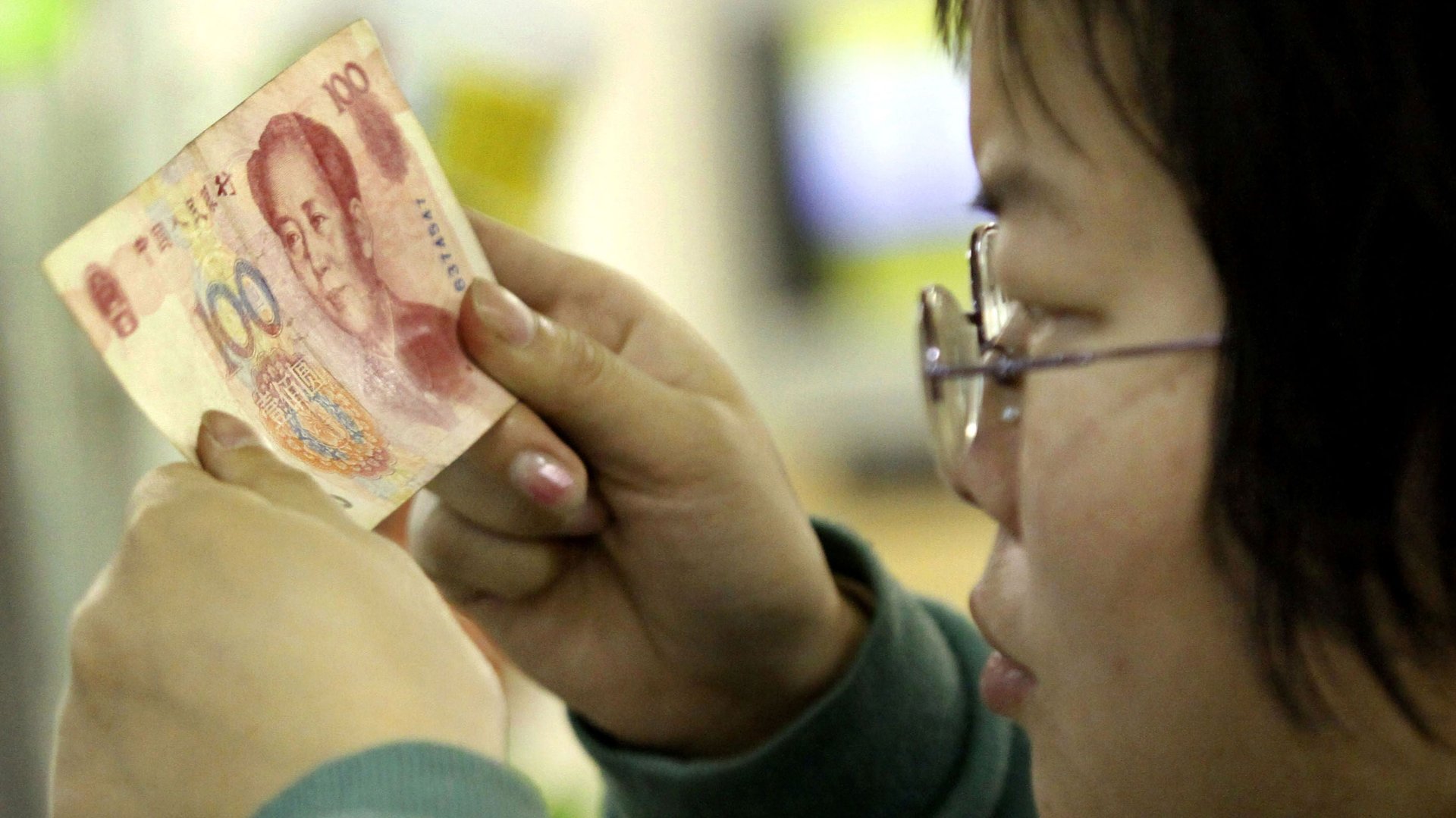New reasons to suspect that capital is fleeing China
Is capital leaving China? Not if you believe the State Administration of Foreign Exchange (SAFE). Although the authority has just issued data (in Chinese) showing a growing balance-of-payments gap—from $12.5 billion in the second quarter of this year to $19.1 billion in the third—it says that the shortfall is nothing to do with money leaving the country, but merely the result of Chinese companies holding dollars to brace for the yuan’s depreciation, thus making the capital-account deficit increase. (The balance of payments is the difference between the capital and current accounts.)


Is capital leaving China? Not if you believe the State Administration of Foreign Exchange (SAFE). Although the authority has just issued data (in Chinese) showing a growing balance-of-payments gap—from $12.5 billion in the second quarter of this year to $19.1 billion in the third—it says that the shortfall is nothing to do with money leaving the country, but merely the result of Chinese companies holding dollars to brace for the yuan’s depreciation, thus making the capital-account deficit increase. (The balance of payments is the difference between the capital and current accounts.)
However, after weakening earlier this year the yuan has recovered, notes Reuters, so there ought to be less need for companies to hold on to dollars. What is more, SAFE cited the same explanation last quarter, when the capital account first swung into deficit, emphasizing that “there is no sign yet of capital flight.”
So, doth SAFE protest too much? It’s hard to say. Tracking China’s capital outflow is notoriously tricky. The Wall Street Journal’s try at tallying it relies on relative foreign exchange reserve levels to reflect the capital in- and outflows. The People’s Bank of China, the country’s central bank, has yet to publish data past September (in Chinese). But given that the bank added just $3 billion to its foreign reserves in Q3, according to today’s SAFE release, the Journal’s method would suggest capital is indeed fleeing.
China finance expert Michael Pettis, meanwhile, sees signs within the banking sector that companies are strapped for liquidity, implying that “flight capital is more than enough to offset China’s very high trade surplus”:
Remember that thanks to disguised flight capital and commodity stockpiling the surplus is almost certainly a lot larger than reported, and yet banks are still feeling the liquidity squeeze. And for all their happy noises, the authorities nonetheless are worried, at least about certain parts of the banking system.
But there are other factors behind muddy account balances, explained Société Générale’s Wei Yao last September. At least some of the capital that appears to have fled China, said Yao, is actually being held in a variety of unaccounted-for ways, as China dabbles with renminbi internationalization. ”[A] Chinese exporter earns some US dollars by selling goods to foreigners and then deposits the proceeds with a Chinese bank, instead of converting to yuan as before,” she wrote. “The bank either lends the money overseas or utilised it in some other ways, and so it becomes FA [financial account] outflows in the form of an increase in other investment assets.”
Yao did, however, find at least one spot on SAFE’s ledgers that invites skepticism: the “net errors and omissions” section. “[It is] a most opaque account under which skillful hot money sneaks in and out of China,” she noted. Looking back to 2011’s balance of payments, the “net errors and omissions” amounted to a cool $35-billion deficit. That seems pretty large, considering that it essentially means “mystery money.” But not so large, perhaps, when compared with today’s data. SAFE’s third-quarter report reflected a “net errors and omissions” deficit of $19.5 billion—and the figure for the first three quarters of the year came in at $48.7 billion. Skillfully sneaking out, it seems.